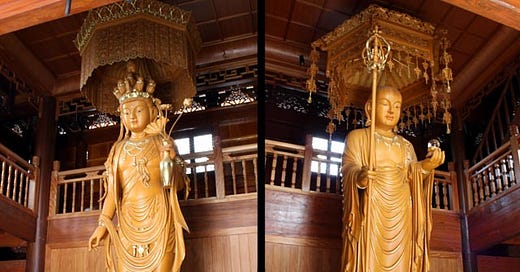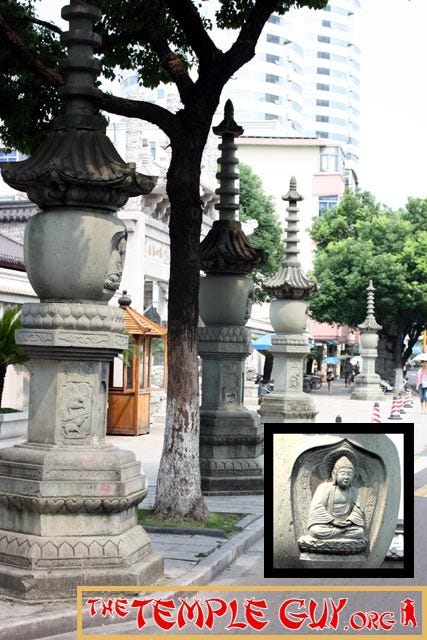Having seen the far-flung temples outside of Ningbo first--my usual technique--it was time to hit the center of town, where I found the new-but-lovely Qita Temple. Come along with me in this episode of--
TEMPLE TALES!
The day after our visit to temples on the outskirts of the Zhejiang port town of Ningbo, I was once again on my own (just like I like it!) and took a "point-to-point" (highway) bus from Beilun, where I was staying, into Ningbo proper. It would nevertheless be over two years until I saw Laowaitan, the bar and restaurant area popular with Ningbo's expats, the city's answer to Shanghai's district famous as "the Bund."
A shocking sight on a Chinese street--Our Lady of the Assumption Catholic Cathedral
I got off the bus fairly close to the temple I was headed for, and had an early lunch at a vegetarian restaurant with the delightful name "Jujube Tree" (Zaozi Shu), located a mile and a half west of the temple, and on the same street. Walking east from the restaurant, I passed the city's bizarrely out-of-place Our Lady of the Assumption Cathedral, a Gothic Catholic church with gold Chinese characters on the front proclaiming Tianzhu Tang: Catholic hall. This lies just south of the city's Tianyi Square, an odd conglomeration of "22 different buildings with a European style" (Wikipedia) covering 49 acres; Wiki says it "provides tourists and citizens with a fashionable and pleasant paradise for relaxing and shopping." So there.
I crossed the Lingqiao Bridge over the Fenghua River and reached the temple ten minutes later.
Some of the seven pagodas on the sidewalk; each is engraved with a Buddha figure (see inset)
You can tell when you're approaching Qita (Seven Pagoda) Temple by the--you guessed it--seven pagodas strung out along the sidewalk. Though each one represents one of the Seven Ancient Buddhas (see Episode 063), like the temple itself they are brand-spanking new.






